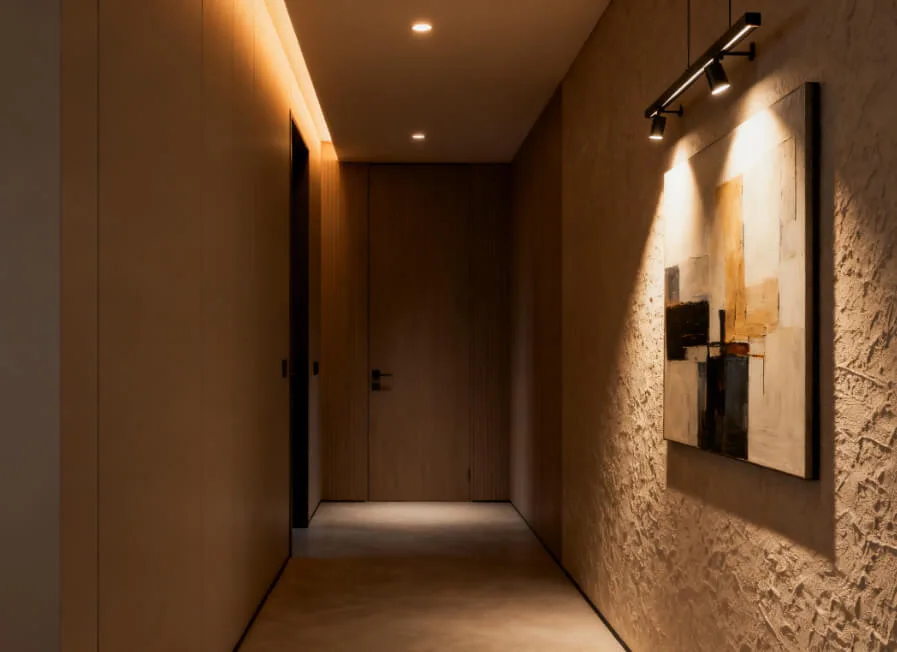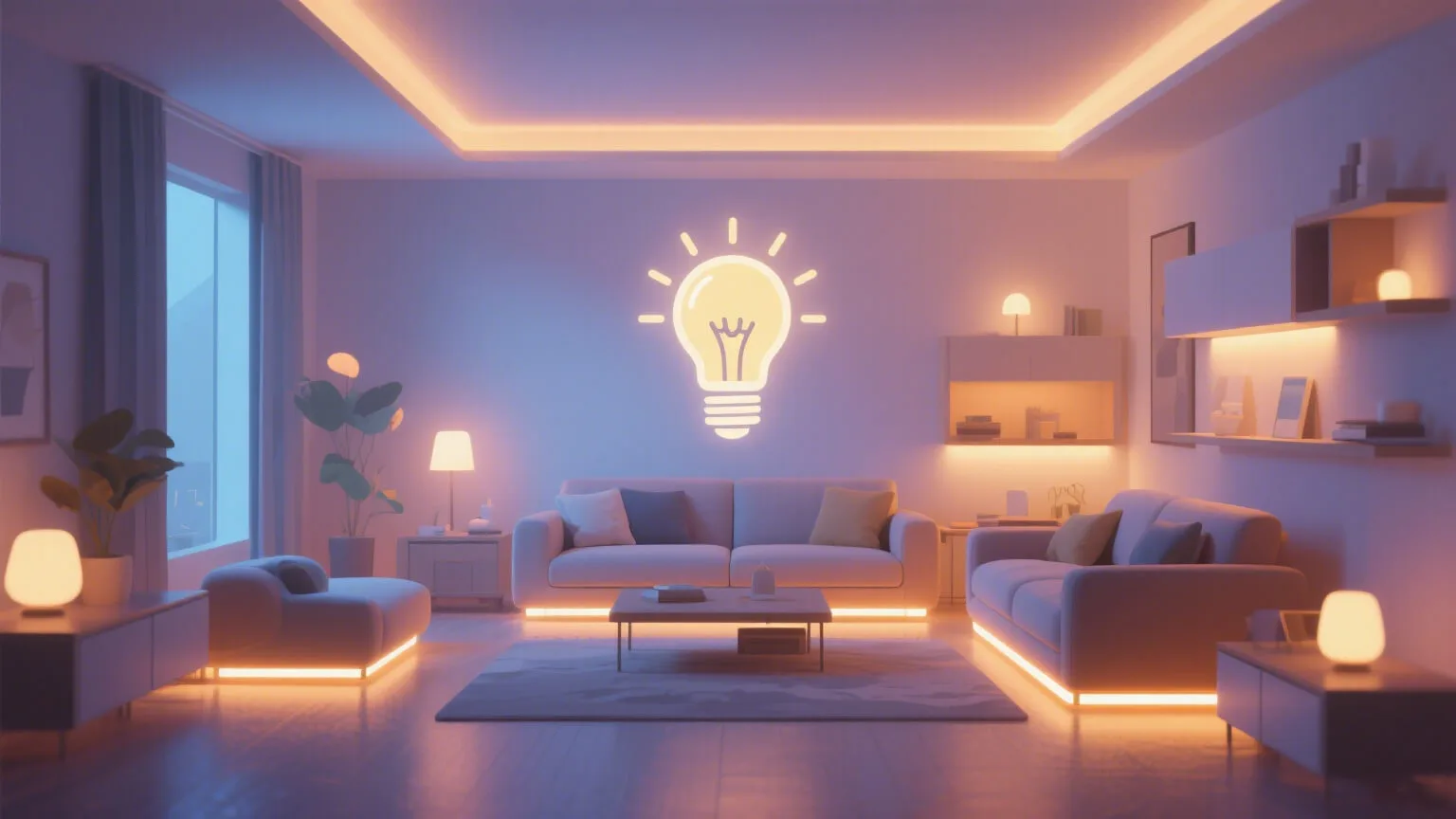The Impact of Color Temperature in Interior Design: Crafting Mood, Function, and Ambiance
Lighting is the unsung hero of interior design. Beyond its practical role, it shapes how we perceive spaces, influences emotions, and even affects productivity. At the heart of this transformative power lies color temperature—a concept that defines the warmth or coolness of light. From cozy living rooms to sleek office spaces, understanding and leveraging color temperature can elevate design from ordinary to extraordinary. Let’s explore how this subtle yet powerful tool impacts interiors.
What Is Color Temperature?
Measured in Kelvin (K), color temperature describes the appearance of light emitted by a source:
- Warm Light (2000K–3000K): Mimics the golden glow of candlelight or sunrise, creating a relaxed, intimate vibe.
- Neutral Light (3000K–4500K): Balanced and natural, resembling midday sunlight. Ideal for clarity without starkness.
- Cool Light (4500K–6500K+): Crisp and invigorating, similar to a bright overcast sky. Enhances focus and alertness.
This spectrum isn’t just technical jargon—it’s a design language that speaks directly to human psychology and spatial perception.
The Psychology of Light: How Color Temperature Shapes Emotion
- Warm Light (2000K–3000K): Comfort & Connection
Warm tones trigger feelings of coziness and nostalgia, making them perfect for spaces meant for unwinding:- Living Rooms: A 2700K glow encourages conversation and relaxation.
- Bedrooms: Soft amber hues (2200K–2700K) promote restful sleep by aligning with the body’s natural circadian rhythms.
- Dining Areas: Candle-like warmth fosters intimacy, turning meals into memorable experiences.
- Neutral Light (3000K–4500K): Balance & Versatility
Neutral white light strikes a harmony between warmth and functionality. It’s ideal for:- Kitchens: 3500K–4000K ensures clarity for chopping veggies while maintaining a welcoming atmosphere.
- Bathrooms: 3000K–3500K provides flattering, natural-toned illumination for grooming.
- Retail Spaces: Enhances product colors without distorting them, aiding customer decisions.
- Cool Light (4500K+): Energy & Precision
Cooler temperatures stimulate alertness and are suited for task-oriented environments:- Home Offices: 5000K mimics daylight, boosting concentration and reducing eye strain.
- Hospitals & Clinics: High-Kelvin lighting supports accuracy in medical tasks.
- Garages/Workshops: Bright, cool light ensures safety and precision in detailed work.
Color Temperature’s Role in Spatial Perception
Beyond mood, color temperature can visually alter a room’s dimensions:
- Warm Light makes large spaces feel cozier but can overwhelm small rooms if overused.
- Cool Light expands perceived space, making compact areas feel airier—think narrow hallways or studio apartments.
- Layered Lighting: Combining temperatures (e.g., warm ambient + cool task lighting) adds depth and dimension.
For example, a minimalist living room with white walls can feel sterile under cool light but transforms into a snug retreat with 2700K fixtures.
Harmonizing with Natural Light
A room’s natural light exposure should guide color temperature choices:
- North-Facing Rooms: Limited sunlight benefits from warm or neutral tones to counteract cool, gray undertones.
- South-Facing Rooms: Abundant daylight pairs well with neutral to cool artificial lighting for consistency.
- Smart Lighting Systems: Tunable LED bulbs adjust color temperature throughout the day, syncing with natural light cycles to maintain visual comfort.
Practical Applications: Room-by-Room Guide
- Living Spaces (2700K–3000K):
Use dimmable warm lights to transition from bright daytime activities to evening relaxation. - Kitchens (3500K–4000K):
Layer neutral overhead lighting with warmer under-cabinet LEDs for both function and ambiance. - Bathrooms (3000K–3500K):
Avoid overly cool tones, which can cast unflattering shadows. Pair with LED mirrors for even, natural illumination. - Home Offices (4000K–5000K):
Opt for cool daylight-balanced LEDs to enhance focus, but add a 2700K desk lamp for evening use to reduce blue light exposure. - Outdoor Areas (1800K–3000K):
Warm path lights or string lights create inviting entrances, while cooler security lights (4000K) deter intruders.
The Sustainability Factor
Modern LED technology allows designers to prioritize both aesthetics and eco-friendliness:
- Energy Efficiency: LEDs consume less power and last longer than incandescent bulbs.
- Tunable Solutions: Smart bulbs (e.g., Philips Hue, LIFX) let users adjust color temperature via apps, reducing the need for multiple fixtures.
Common Mistakes to Avoid
- Ignoring Room Function: A cool-lit bedroom may hinder sleep, while a warm-lit workshop risks eye fatigue.
- Overlighting: Too many cool LEDs in a small space can feel clinical. Balance with warm accents.
- Inconsistent Temperatures: Mixing clashing tones (e.g., 2700K and 5000K in the same room) creates visual chaos.
Future Trends: Adaptive & Human-Centric Lighting
The rise of human-centric lighting (HCL) takes color temperature to the next level. Systems adjust dynamically to support circadian health—cool light energizes mornings, while warm tones signal evenings. Pair this with architectural lighting (like LED grille lights) for seamless, mood-enhancing environments.
Final Thoughts
Color temperature is more than a technical detail—it’s a design superpower. By thoughtfully selecting warm, neutral, or cool light, designers and homeowners can craft spaces that not only look stunning but also feel right. Whether you’re renovating a cozy cottage or a cutting-edge office, remember: light isn’t just illumination; it’s emotion, function, and artistry in perfect balance.
Illuminate wisely, and let every room tell its own story.



